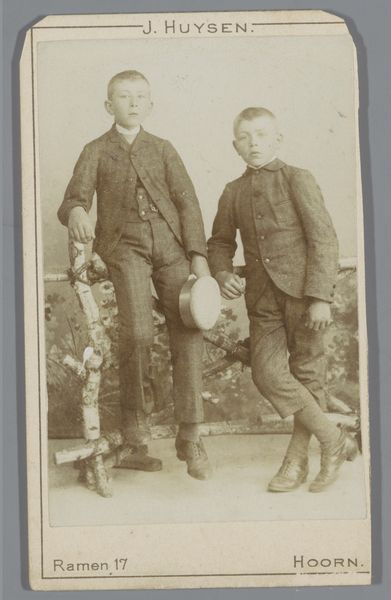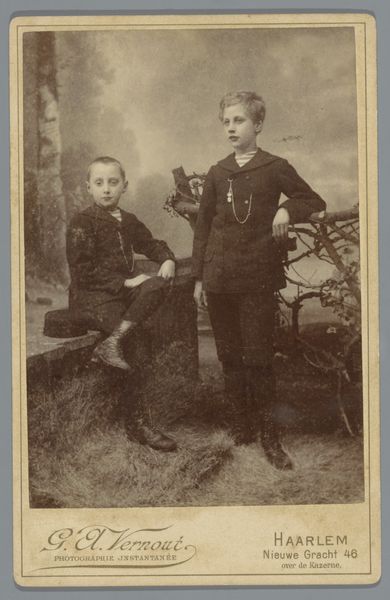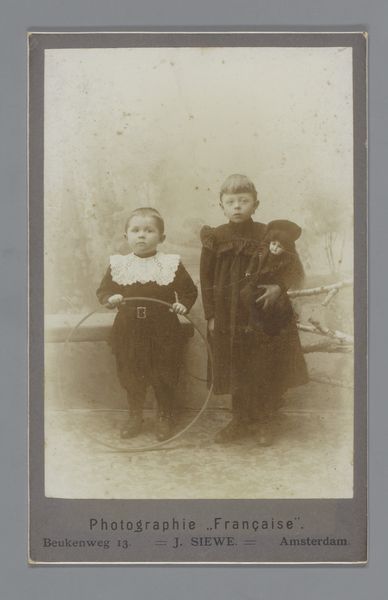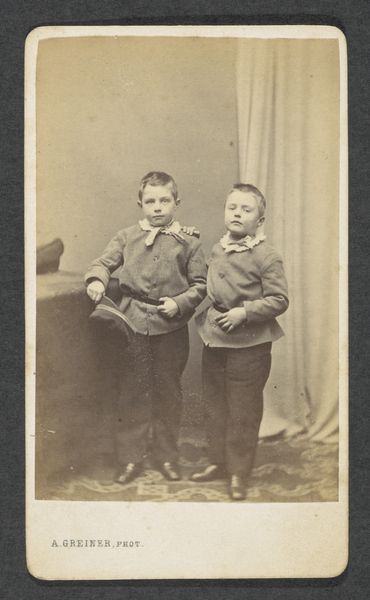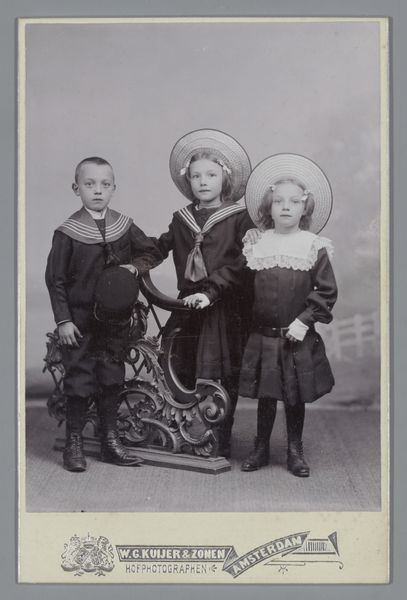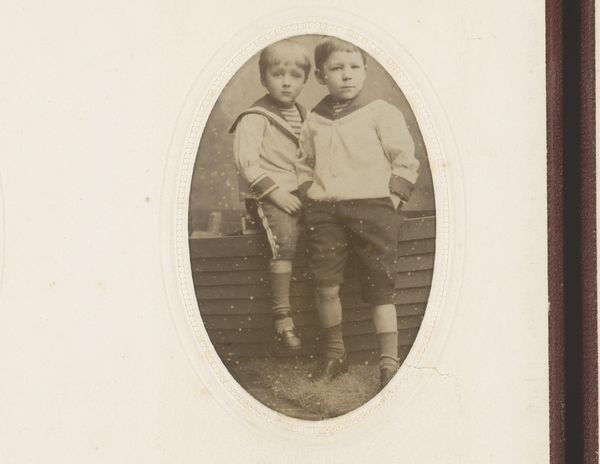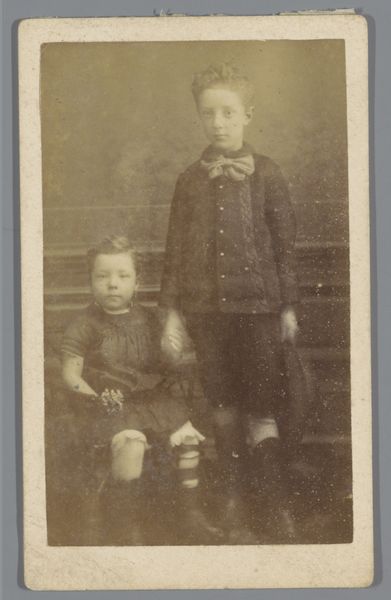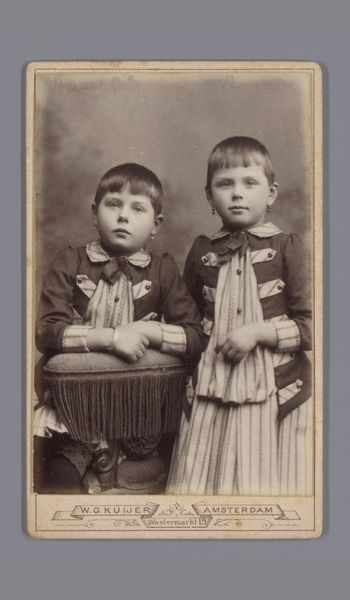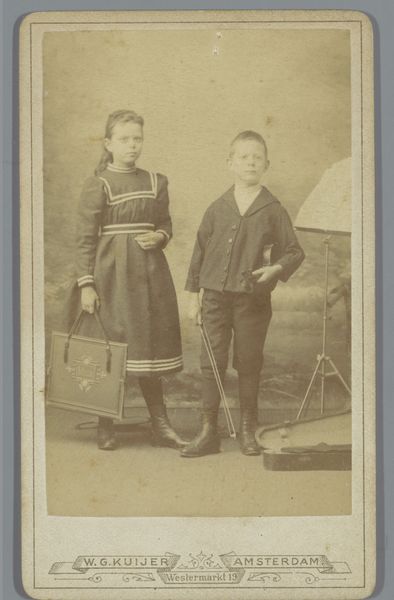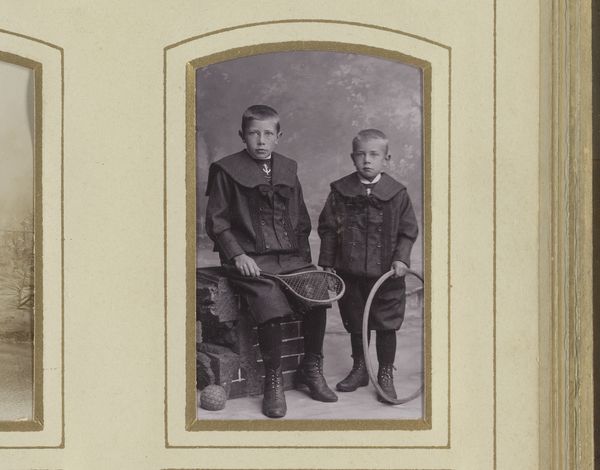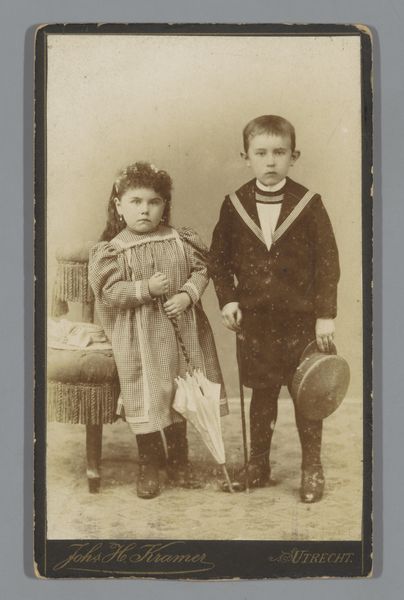
photography, gelatin-silver-print
#
portrait
#
photography
#
coloured pencil
#
gelatin-silver-print
#
genre-painting
#
realism
Dimensions: height 103 mm, width 62 mm
Copyright: Rijks Museum: Open Domain
Editor: This gelatin-silver print, "Portret van twee onbekende jongens met hoeden," was taken sometime between 1880 and 1891 by Gerben Hiemstra. It depicts two young boys in nearly identical outfits posing against what looks like a rudimentary fence. I'm struck by the formal rigidity of the portrait, especially juxtaposed with the children themselves. What do you see in this piece? Curator: I see a careful staging of childhood, ripe for deconstruction. The matched outfits, the way they're leaning on the "fence" – it speaks to a very specific late 19th-century notion of boyhood and class. This rigidity wasn't just about aesthetics; it enforced social roles. Who controlled the image? How were these boys positioned in terms of expected societal performance, gender expression, and privilege? Editor: That's interesting. I hadn't thought about the social roles embedded in it. Does the act of posing itself also have implications? Curator: Absolutely. Photography, even then, wasn't a neutral medium. It had a profound effect on constructing identities and reflecting the cultural values of that era. We need to question who gets to be seen, and how their image is circulated. For instance, why these particular outfits and the stiff posing for the subjects, who likely wanted to play instead of holding still for extended times? What are the power dynamics in the photographer-subject relationship? Editor: So it's more than just a snapshot of two boys; it's a reflection of the socio-political climate of the time. Curator: Precisely! Art doesn't exist in a vacuum; it actively participates in cultural dialogues. To interpret an image, you need to consider what’s present, what's absent, and, critically, who holds the power in the image-making process. Editor: Thanks. I will definitely see portraiture of children differently going forward. Curator: Remember always to question, challenge, and engage critically with the stories art tells us – and the stories it often leaves out.
Comments
No comments
Be the first to comment and join the conversation on the ultimate creative platform.
